
The First Battle Of Transports
February 2009/ March 09
Description of contenders:
1. Theta - chosen because it is legendary, because it is unmodded and
for the worldwide audience can serve as a benchmark, and because it
sounds bloody good in my home. So far - by far - my best transport.
Cost on ebay USD500
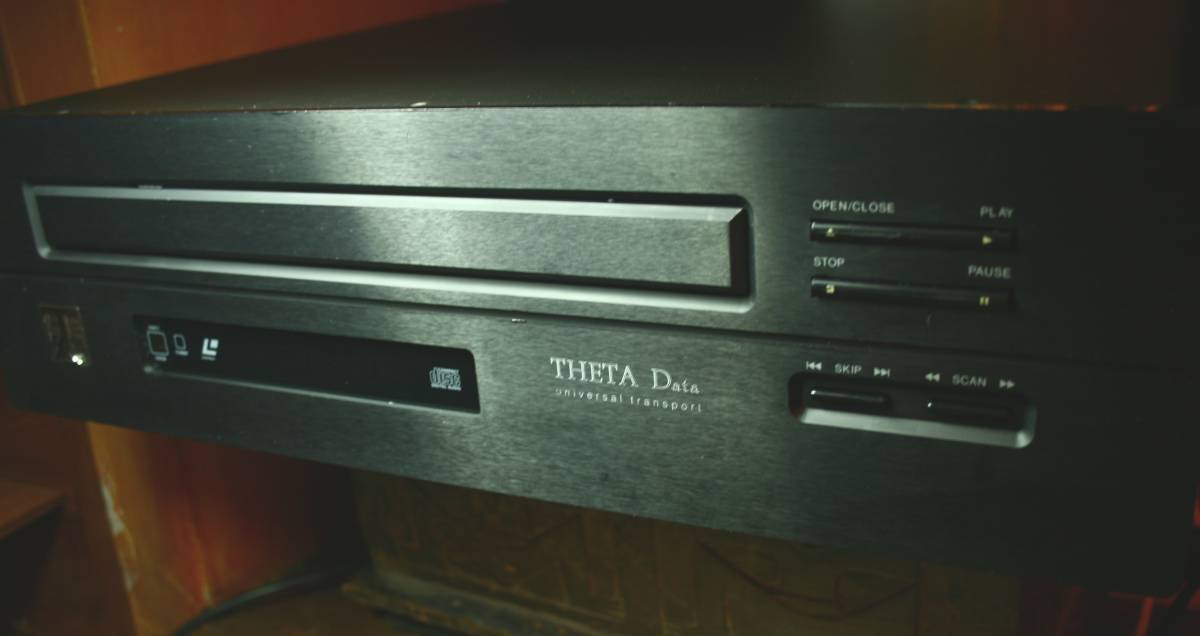
2. Pioneer DV300 was
suggested by some fans as a great transport on the
budget (additionally it is very exciting to know that Swiss Goldmund
picked
it as their choice of superb transport) I have modded the
Goldmund - namely it has a handful of os-cons, the
battery powered Kingwa clock and direct s/pdif output straight from
chip.
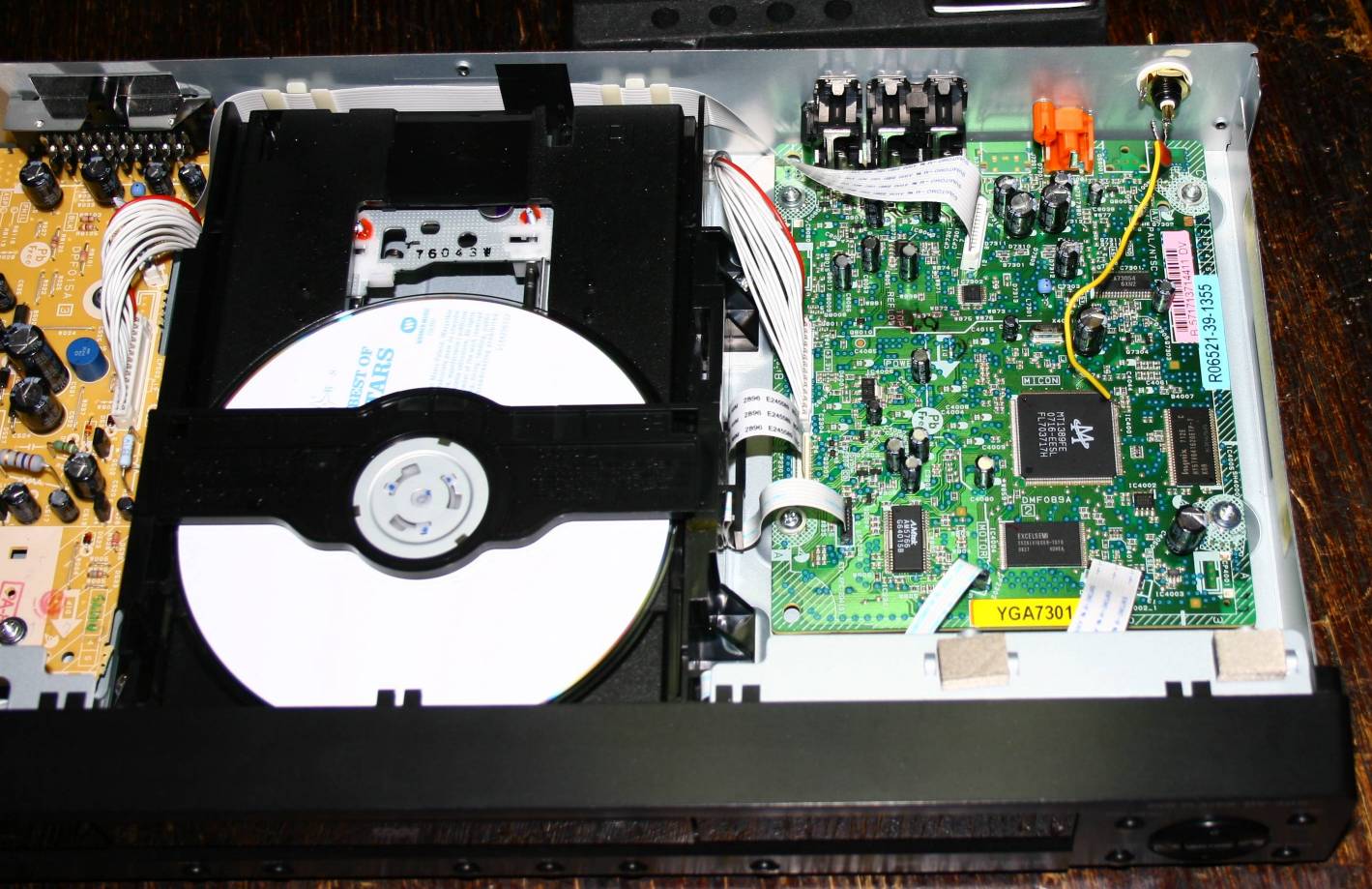
3. Shigaraki is the most discussed phenomenon in the whole Transport
department worldwide. So IT HAD TO be included.
Modded heavily by The Master of Shigaraki Cloning - Andy777 -
with EVERY
consumer onboard having a
dedicated power supply - transformer, regulation and filtration. Clock
from deTom (Polish) and nice case from JVC. Full black gate upgrade and
tantalums in supplies.
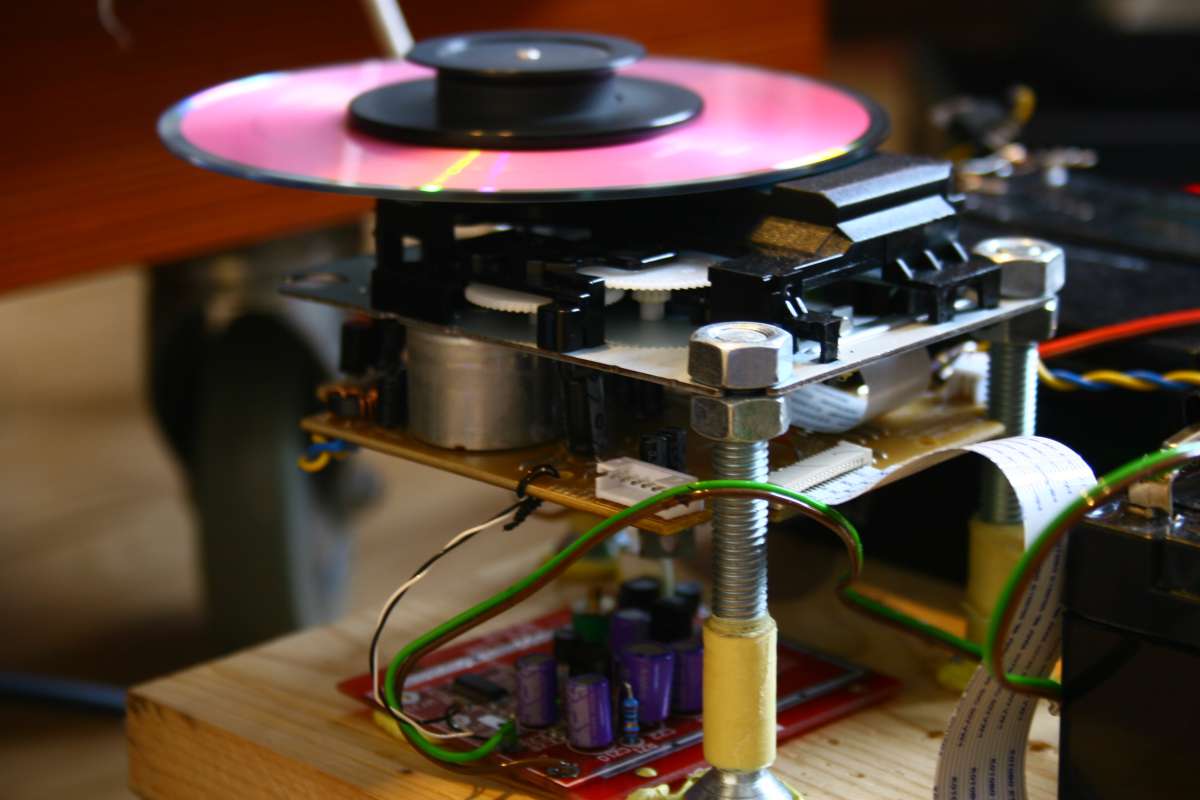
4. The Fikus Transport 1,0 is
a Philips CD940 chosen by me
because of its
superb CDM9 mechanism. I chose it because it plays well, it works
fast, it can be bought for little money, it reads every CD without
problems and there are millions of them out there.
I decided to tweak it to the limit: digilampizator, newest low esr
os-cons SEPC, again every power consumer onboard having a new
dedicated power supply - transformer, regulation and filtration. This
applies to laser, motor, servo, display, demodulator, microcontroller
and S/PDIF transmitter. Clock from Kingwa. Bituminous felt, new
oversized transformers, new AC filter, etc.
Read about it HERE
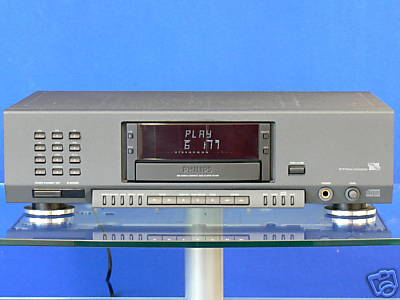
5. The TEAC VRDS X-25 with its very good VRDS mechanism level
2,
with new
Trichord4 clock, with Audiotuning chip upgrade - will be another
benchmark. We know it is very good and we know what sound to
expect. VRDS does good job of playing depth, good order on thre scene,
good silence between notes, good 3-d .
So far it won easily with both the Teac T1 and with NAIM CD-3 converted
to Transport. Compared to the Pioneer , Shigaraki and Philips /
Fikus - this transport is from different school. The VRDS means heavy
flywheel and big clamp. The other players are from the small inertia
and small momentum camp.
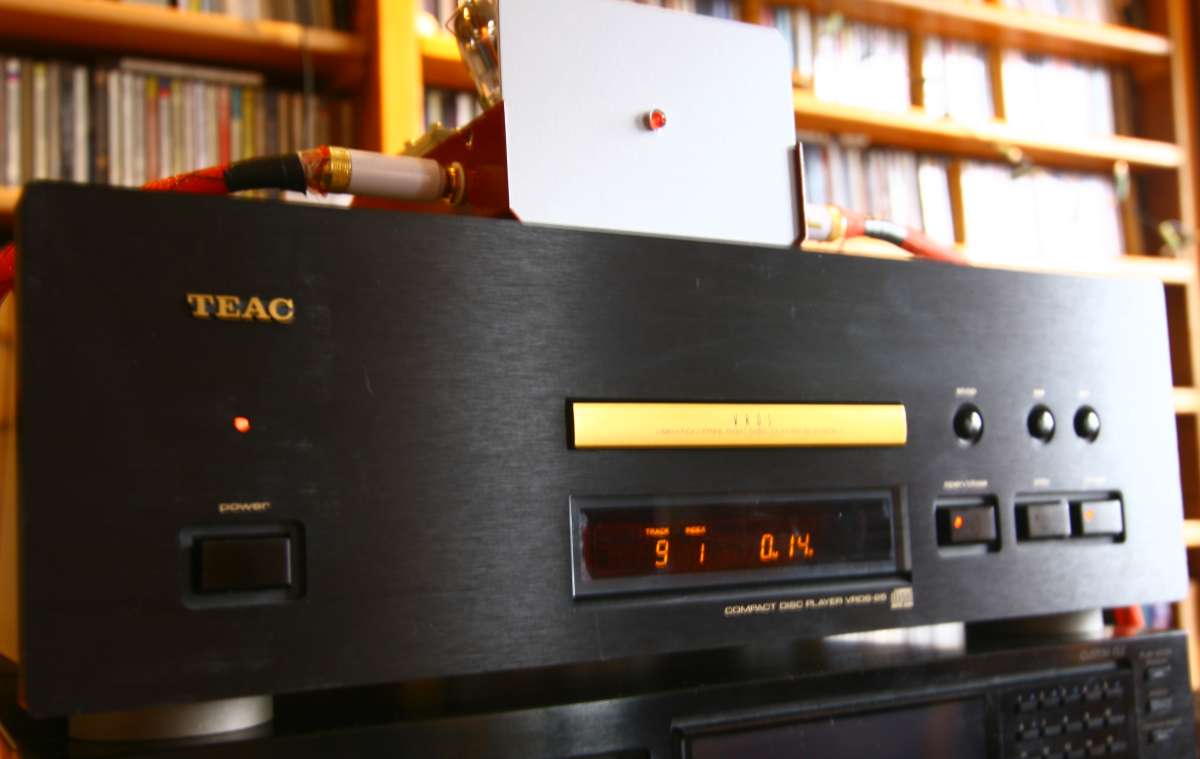
6. Tube Technology Fulcrum Transport
As much as I am trying to avoid wasting time for exotic products, this
one deserves attention. Tube Technology is one of the VERY FEW
companies in existence who have anything interesting to say (and offer)
in terms of inventions, pushing technology, finding own solutions,
questioning status quo, etc. At the same time they love TUBES so it is
a match made in heaven. They apply smd where it makes sense and tubes
too.
What is so special about TT gear is that they don't use off the shelve
DAC chip but rather design a computer that does all the function of
demodulator, digital processor, filter and DAC in their fully
controlled process. It is upgradable by eprom and future proof to a
degree.
They are famous for EXCELLENT service and enjoy high customer loyalty.
The transport and DAC should go together because they work best with
each other.
7. North Star Design Model 192 - the representative of CD-PRO2 camp
(VAU 1254/11)
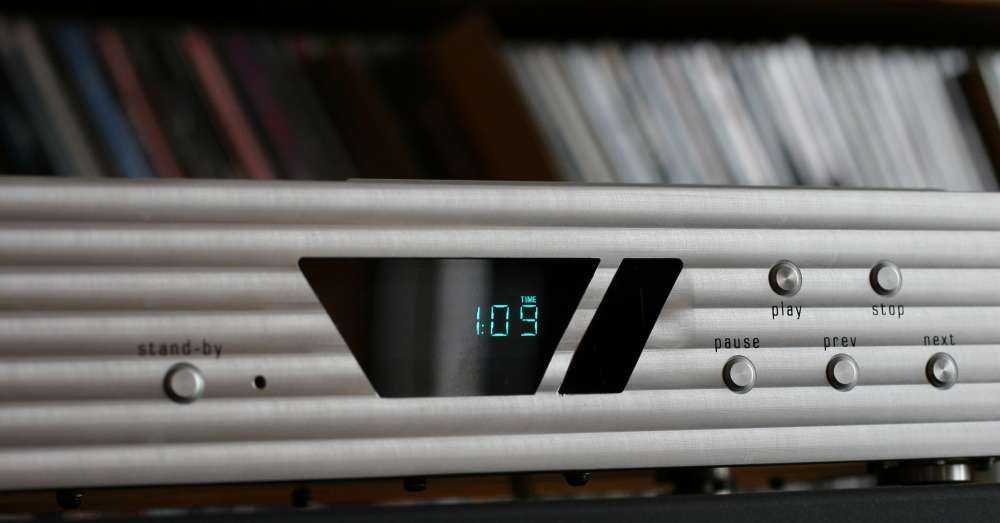
This transport is a small and funny job. Luuks like a garage company,
with just standard CD-PRO2 kit mechanism and very cute own PCB design
for power supplies. Basically, what it is is a CD-pro2 kit plus my
sixpack. Price however is Gucci. Like almost everything in Italy.
Read more here NORTH
STAR TRANSPORT MODEL 192
Associated equipment:
Amplifiers: ARG OTL mono block (6C33C)
Preamp: none
DAC: Lite Audio DAC-AH, Buffalo Sabre32
Digital cable: generic
Speaker cable: DIY tin, stranded, multiple twisted pair
Speakers: P26 (Raal Ribbon, /Isophon Alnico, Altec Lansing / TESLA ARO
Music: Shirley Horn - Remembering Miles. Roger Waters Amused to Death,
Miles Gurtu, Brian Ferry American Songbook.
THE BATTLE BEGINS:
1. Shigaraki v.s. Theta Universal
The Theta has a sound which is very solid, reliable, without flaws. But
it does not surprize with fireworks.
Shigaraki is one big firework. It has super fast attack, the sound is
full of very detailed trebles, making the background mothertape noise
audible, which gives a sensation of closeness to the oryginal event and
analog like presentation. There is also greater clarity and
transparency with the Shigaraki. It does well what is the key to good
"transportation" it addresses the key element. (I still dont know what
the key element is). I can compare the sound of Shigaraki to a 3 years
old racing horse. Lively, energetic, vibrant, crazy. Theta is an old
emotionaly stable horse, it cant go wrong but it will not race either.
I could live with both transports, but the Shigaraki is more exciting.
The difference is not big, but it is undeniable.
Also Shigaraki gets 2 BIG points: one for reading CD-R every time
within 100 miliseconds - Theta does not read most of them and "thinks"
for 3 minutes before deciding to play.
Second big point - Theta mechanism is irrepairable - Shigaraki can be
bought for as little as 5 Eu on ebay. You can keep 5 of them in the
freezer just in case ... ;-)
2. Pioneer DV300 v.s Theta Universal
Pioneer sounds more or less as the Shigaraki. The point for Pioneer is
that we dont have to spend 5 weekends to modify it, as we need to with
the
Shigaraki. To upgrade the Pioneer takes 1 hour of easy work. The
Pioneer, compared to Theta - is also faster sounding, with more
trebles, with more plankton, with great pace and rythm. The Theta beats
it in bass department by a hair. Also Pioneer can play movies too,
Shigaraki can't, and Theta can do - but only Laserdisc ;-)
Joking aside, Pioneer is a very attractive proposition for what it
costs, but the lack of some authority in the deepest bass makes
it not as sexy sounding as
the Theta or Teac or even Shigaraki. The difference - as all
differences in Transport - is VERY small. I can detect it only thanks
to my hyper transparent equipment downstream. On a positive side - the
Pioneer is making the best trick of around the head 3-d illusion. With
the clock installed - it is also the most liquid sounding of all of
them.
3. CDM1 in Philips 304-2 V.s. Theta
I really wanted to try the good old full metal cast alloy mechanisms
from philips but unfortunately all these players don't have S/PDIF
output. All- except one. The Mother of All CD's - the near perfect
beauty Philips 304-2 has at the same time BOTH: CDM1 AND the 7220
chip with S/PDIF.
Compared to Theta, this transport is a little bit worse in every area.
From bass to trebles, width, depth, instrument separation,
microdetails, sensation of being there - in every area Theta is nicer.
Both players were un-modded, but the Philips traditionally had horrible
S/PDIF trace on the scope. It was like spaghetti. The signal is
generated nicely in the SAA7220 chip but after it leaves the leg 14th,
it goes through real trauma ! Especially their shitty output
transformer is really bad. I have no idea what it is for. Who said that
there must be galvanic isolation ??? Why not optoisolate ? Are they
using the transformer for no reason at all? I read all kinds of
explanations and I am not convinced at all.
So before you dispose of your Philips used as a transport - please
capture the pure signal from SAA7220 leg 14th, float it (cut off old
line) and wire it straight to the RCA. To make it lower in
absolute voltage - use a 75 Ohm resistor to ground. That is the
simplest way of doing it. Trust me on that one.
The result of the Philips means that I will not use if for the future
battles. It scores below the Theta benchmark and gets eliminated.
As a side note: the old machines - tens and tens of models from
Grundig, Philips, Marantz, Loewe, and many more - which use the superb
CDM0 and CDM1 to my knowledge have neved been "forced" to work as
transports. The internal data protocol of the four chips: SAA7000,
7010. 7020, 7030 - use different data format. I think it is too
difficult for me to design a HC74xxx chip which would convert the data
into I2S and then we could take it to SAA7220 and get S/PDIF. If anyone
knows how to do it - please write me.
But to be honest - these machines are FANTASTIC on their own, playing
with their built-in TDA1540 dacs and in NOS mode with Lampizator - they
sound heavenly good. So no need to add dig output and use external DAC.
4. Fikus Transport 1,0 V.s. Shigaraki
This one was a tough battle. Both players are very capable. Going
straight to verdict: the shigaraki sounds a little bit colder, more
sterile, but at the same time with more details, better highs, more
transparent. The difference is VERY small and at the same time - Fikus'
Philips is warmer, with fuller bass, and very appealing presentation.
Depending on preferrences, one may find his preferred player of choice
to be better. On A-B test - shigaraki wins on my system, but it
is very subjective. Surely Shigaraki is an impressive player.
I know I could make for the Philips an I2S output, I am not sure it is
possible with the Shigaraki. On I2S surely there would be no contest -
Philips would win. Also the amount of work needed - gives a nod to the
Philips because Shigaraki needs a LOT OF WORK to be what it was in my
test. Philips - needs one evening of easy work.
5. Fikus Transport 1,0 V.s. Teac VRDS X25
This time - I had to admit loosing a little bit to the Teac. The
Philips was good, but Teac - more "interesting" and involving sound.
Wider stage, more intimate connection to the event. My preference was
to Teac but distance was small. Most noticable difference was that Teac
had wide stage uniformly populated by sounds, and Philips put all
threads more in the centre of the stage. A subtle but interesting
difference.
6. Fikus Transport v.s. Pioneer DVD DV300 / (Goldmund)
7. Fikus against Theta
As a stock unmodified Philips CD940 transport - it plays quite
well. I would say - better than most players used as transport. Theta
is still a touch better in every area: bass is deeper and stronger,
space is better in all 3D aspects, trebles are more airy, it is more
musical and mole pleasant. But difference is not night / day - just a
liiiiittle bit.
After performing all the work on the Philips - I made a new monster. In
fact, If Levinson or Krell or any other Jadis were doing a good
transport - that's what they would do. Use off the shelf components
either from Philips, Sony or Sanyo, and build good power regulation and
overkill oversizing everywhere. Thats wat I did.
My own practice is to do away with the S/PDIF output transformer which
I consider a bad thing. I just remove it.
So how does the "Fikus Fillips" compare to the Theta?
It does very well. I was struck by the similarity of the two, after
remembering how he Theta bettered it just 2 weeks ago. (After all they
are both based on almost the same Philips chips). My Philips jumped two
classes up after the mods.
As much as I admire the ability of theTtheta to have deep strong bass,
wide and deep 3-D space, musical drive, energetic pace, dark silent
backgrounds. air between instruments - now the Phil does it all and
more. I would say that my Philips beat the theta by 5% on every
dimension, being over all more interesting to listen to, and definitely
MUCH faster to operate..
The strongest feature of the Fikus Philips is that the musical event
image in our brain is easier to follow, has more reallistic connection
of the "dots". Also the sudden sounds like strings plucked or triangle
struck - sound more scary and immediate on the Philips. If they were
battery toys, the Philips would be the one with fresh Duracell
batteries. Its spring is wound stronger.
They are very very similar - but Theta needs tweaking to equal or beat
the Philips (of course I can imagine the theta running on all OSCONS
SEPC !)
At the time of writing - Philips is a winner. If my memory serves me
well, at this quality level the Fikus Philips can easily go and meet
the Shigaraki clone. Their are both slightly superior to the theta.
8. Fikus Philips 1,0 against the North Star Design Model 192
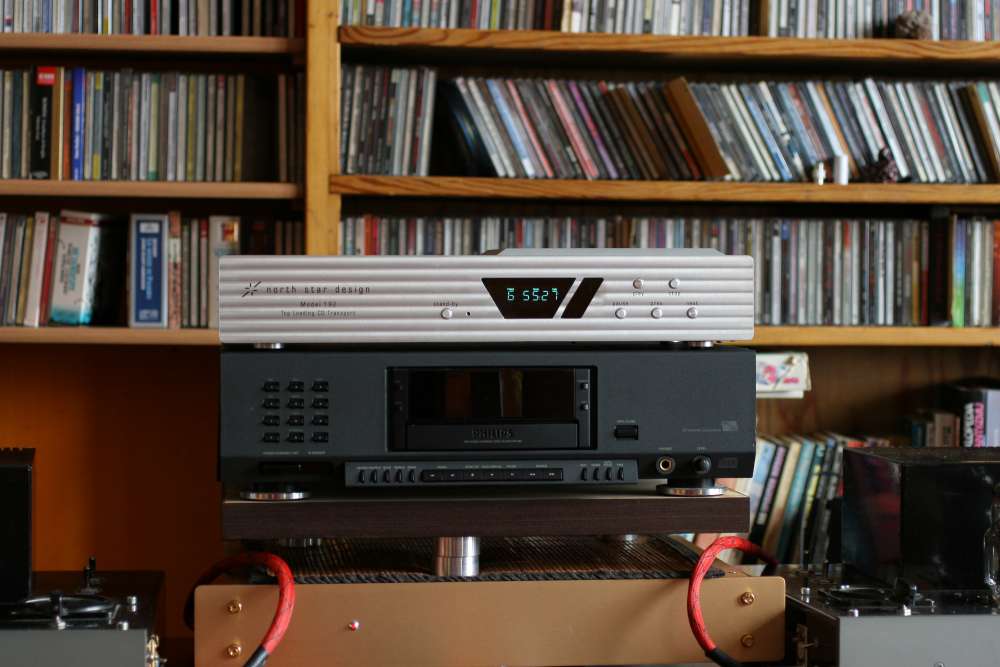
These two players have many similarities: The North Star uses CD-PRO2
mechanism, Philips uses CDM-9 (in my opinion better). Both have 7
regulators. Both have similar chipsets from Philips. Only the North
Star was 25 x more costly.
How do they compare?
Despite trying hard all sunday I could not nail down the difference.
Both offer similar sound, very similar, and I think I liked my Philips
better by a thin hair. It had more lively sound, more vibrant, with
better attack, with more inner light and information about background
details. But I want to be prudent and modest and I will call it a
deuce. I liked both of them and I could live with any of them. If you
can get the NORTH STAR MODEL 192 - get it. Just be careful not to
over-pay for it. And it will sound best with his own DAC from
North Star especially in I2S mode.
9. Pierre Lurne Audiomeca Mephisto 2 V.s.
Teac VRDS X25
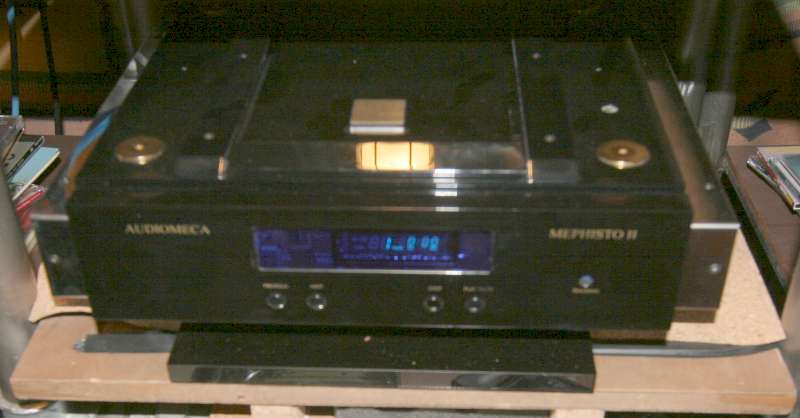
OOoo this is getting interesting. Mephisto2 is a super cool player from
one of the most specialized company from France. In some circles,
Audiomeca is considered the king of transports. This company became
famous thanks to the turntable production. But I used to have many
contacts with the Mephisto One, I myself - like it a lot. How
does The Two compare ?
Well, mechanically it is totally different concept. The one had CDM9
mechanism from Philips, the TWO has a sanyo mechanism. The one is a top
loader with a lift up lid, the two - has a sliding cover. The one has
integrated puck, the two - a loose puck that has to be put on
manually. The one has s/pdif output, the two - has s/pdif.
aes/ebu and i2s. So far so good.
Under the cover - the news are disappointing. The Sanyo mechanism is
not on haal magnetic rails, it is a simple mechanism, a'la shigaraki
clone. Nothing impressive.
The electronics consists of the regular Sanyo PCB from some stock cheap
player. The PCB is absolutely stock and plain. It contains all controll
electronics - the microcontroller, the servo, the receiver demodulator
and (probably) the DAC too. The caps and parts ate low end,
nothing has been upgraded.
The Audiomeca player has a separate PSU unit. Unfortunately - inside we
find a very cheap and small transformer with just about 30 VA of power
and simple CRC filter. I would say - this is the same PSU as was
oryginally deployed in that cheap sanyo they hacked.
So is there any value ? Well, there is an Audiomeca PCB added to the
system which contains three quatrz oscillators, probably - for three
sampling frequencies: 44,4; 98 and 192 Khz. I did not understand
all of the extra circuitry - but I would say - nothing exceptional.
The small plus I can give to Mephisto 2 for the mechanical
construction. On one hand - the body is made of thin cheap steeel
press, so it might ring like a bell. On the other hand - they suspended
the mechanism on some rubber cushions. So it is a bell with a
cushion. HMmmmm, my reaction is a mixed bag.
Visually - the player is simply stunning ! It screams HIGH
END and also I AM NOT A SHANLING. Very nice indeed.
The ergonomy is okay - there are the most needed buttons on the front,
and the remote gets 2 points out of 10. It is the sanyo stock remote.
Can we compare it to the real deal Teac ? With its serious VRDS
mechanism with Sony Kss151A laser, with heavy tank like body, with
impeccable high end electronics and big ego (sorry - I meant FAME).
Lets try.
We tried the most intimate recordings of the collection - Holly Cole's
Temptation. I heard beautiful rattles, clean picture, details
easy to follow, etc. I did not have the usual goosebumps. Holly was
remote, distant and COLD. I mean the sound was great but not intimate
anymore.
Back to the TEAC X25 (Trichord4, Audiotuning chip upgrade.)
Holly moved closer, I could almost smell her perfumes. There was an
aura of studio reverb around her, the recording was intimate, private,
engaging. The difference is really subtle but I report wnat I
thought. The stock Mephisto 2 does not cut for me the very
important aspect of music, it is cold like a computer.
We decided to try and mod the Mephisto - maybe os-con the sanyo PCB,
upgrade the shameless power supply and maybe - steal the signal before
it is manipulated. The signal did NOT come from the source chip intact.
Lurne tried to "improve it" to justify his high price and his sonic
genius signature. Unfortunately - the result is opposite from thre
excellent Mephisto 1. The sequel is - as usual - a failure. Long
live the VRDS X25.
I am gonna let the winner take some rest after this tiring battle
and then - to face my Fikus Transport 1,0. There can only be one
champion.
10. Mephisto2 against the Fikus1,0
The mephisto, still quite cold and less involving than the Teac X25 -
played by a thin hair better than Philips. You could call it a personal
taste but Mephisto had deeper stage and more clear detailing. If Teac
was 100 that evening, Mephisto 2 was 90, and fikus transport - 75.
The winner of these games will travel to the other home and will be
having the final test against the Audiomeca Mephisto driving the
Audionote DAC-4.
11. Mephisto2 against Mephisto 1.
In this scenario - the stock mephisto 2 was tested against the fully
black-gated Mephisto 1 driving the Audio-Note 4 se DAC
The two walked over the one without a doubt. The presentation was more
interestimng, more engaging, with better scene, with clearer sound. I
liked it more in every aspect, including the looks and ergonomy of the
lid.
12. Modded Mephisto 1 against the two
After adding a three-pack of power supply to the Mephisto1 PCB it took
off to another league. It was better than the two - fuller, warmer,
more musical, although not by much.
I wonder how the two will sound after similar mod with oscons and
regulated 5V DC power lines to all chips.
13. Recent
test
- the modified CEC TL-1X against the Theta and the Sony
The CEC TL1X was
compared to Theta Universal transport (my bass reference) and to Sony
CDP-xa5es - my overall transport reference.
The CEC wins
with the Theta in the bass, and in all other departments as well. Theta
is great in the bass and space, but CEC has so much more details and
goosebump illusion of musicians in the room. No contest.
The same for
Sony. Cec wins with one hand tied behind the back. It is that good. All
bass problems disappeared, while there is still beautiful musical mid,
space, depth, stereo, goose bumps, magic - you name it.
My hotrodded
Behringer with Lampizator driven by the CEC sings beautifully now. I am
so happy that
despite discovering a crappy motor and unbelievably terrible stock
trace of spdif - I can call CEC the winner and the keeper. I am not
parting with it no matter what.
CEC compared directly with TEAC T1 transport with VRDS4 crap - shows so
much more music - it is another league.
The only transport which holds against the modded CEC is the Mephisto2,
very similar machine.
14. Nov 2009
- Hot rodded Kenwood X9010 transport against the CEC TL-1X and hot
rodded TEAC VRDS 25 and the Fikus Philips 940
The good old friend - Mister Ken - returned to me for a quick
laser adjustment. I noticed a new clock, etc. So I took it for a spin
against the permanently reigning MahaRaja of Fikus House - THE CEC.
Kenwood, 3 years later, after me seing hundreds of other players inside
- remains to me the best made CD player ever. I mean mechanically
speaking.
In stock form it never managed to beat the other high end transports
on sound quality. And Kenwood company soon after took a nose
dive. They left the leftovers of their heavy engineering department to
Accuphase, but thats another story.
The Ken with new electrolyte caps. new laser, and aftermarket clock -
sounds great. It is in the world elite of transport but not quite up to
beating my tweaked CEC. The difference is very very small, but I still
prefer the CEC for its liquidity and silky smooth presentation. Having
said that - Ken is between 5 to 10 times cheaper.
The CEC against the VRDS25 from Teac - again - same result as with the
KEN. I feel that Ken equalized the VRDS25 but the CEC is safely
reigning.
I even opened up the VRDS25 to see what can be upgraded as a transport
- and I found NOTHING that I could improve. The TEAC is as simple and
purely made SP/DIF as possible. No crappy SP/DIF transformer, no maze
of PCB traces - just a perfect job. I AM IMPRESSED.
Fikus Philips 940 transport - plays on a different note - it is
lighter, faster, more smooth and easy than the heavy fisted Ken. The
Philips 940 is like the Mephisto for the poor. It is similar to CEC
sound but CEC wins in the bass depth. Just a notch. But again - the CEC
cost 23 times more than Fikus940.
A FINAL NOTE: In the process, I found that the Behringer Upsampler improves every
transport by a considerable quality margin and it is a must for every
DAC chip except TDA1541 and other 16 bit machines.
Parts for this project






